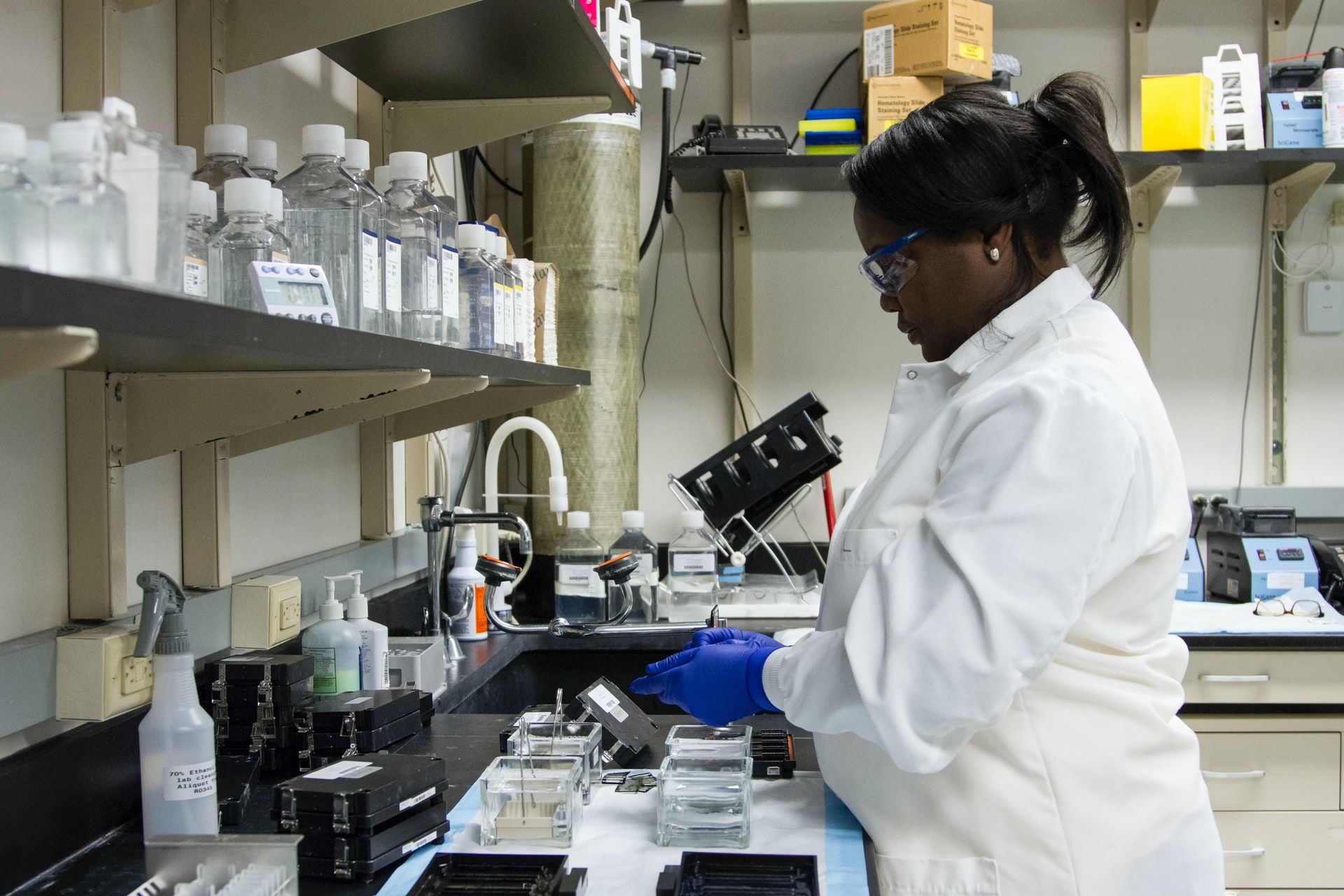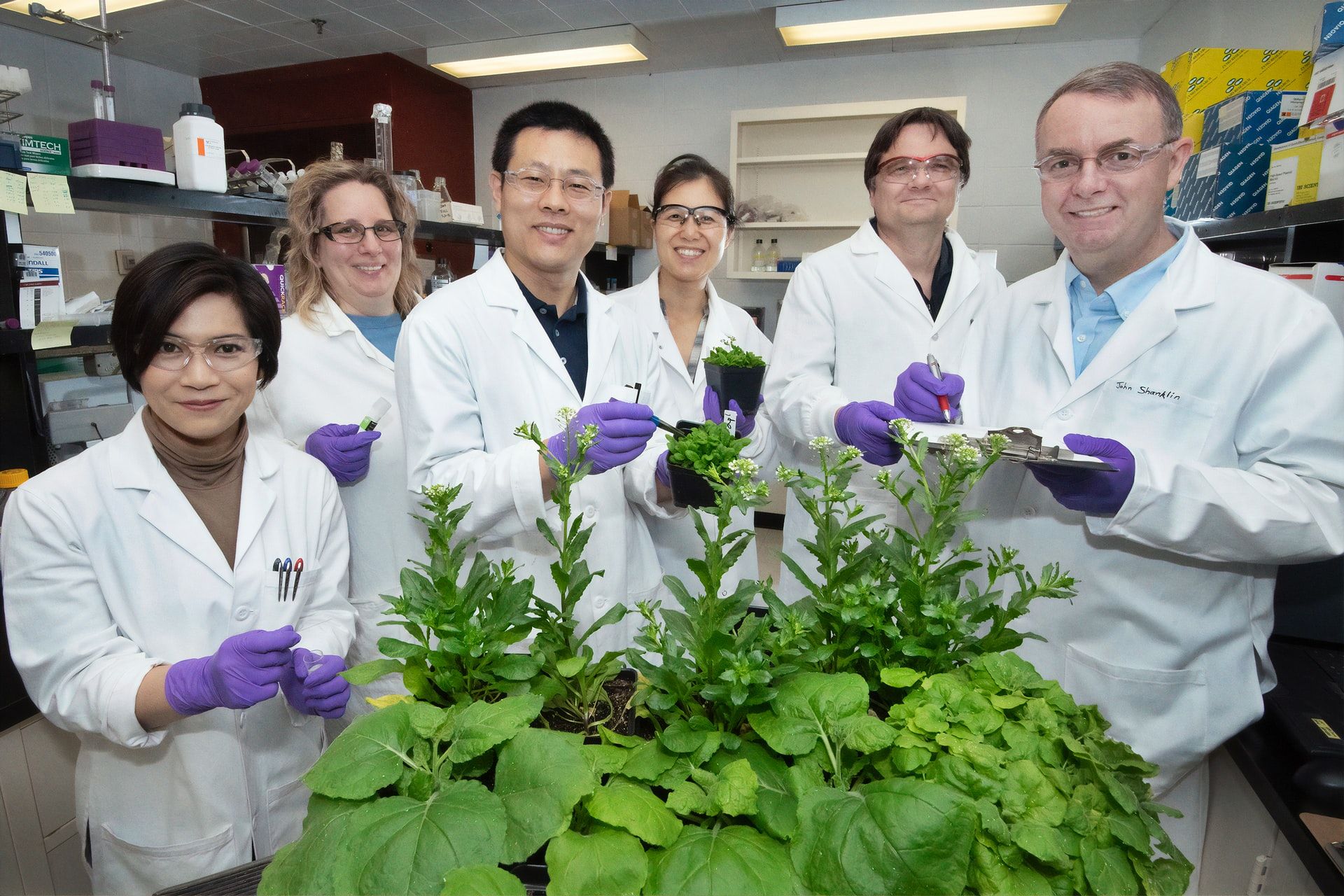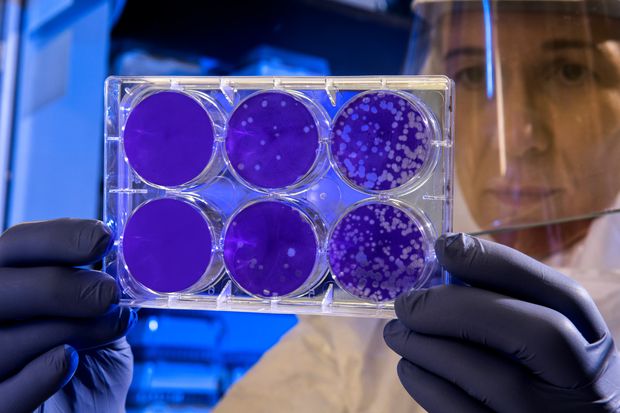Biology studies every living thing on Earth, from the simplest and smallest single-celled organisms to the complexity of the human brain. The science of biology shapes everything from agriculture to psychology.
And like most sciences, biology is rapidly advancing due to advances in technology. Breakthroughs in biology have a huge impact on our world.
In this article, we explore the five most groundbreaking biology breakthroughs from the past few decades.
(Oh, and if you are studying biology in school or college, check out our Biology 101 flashcards. We created this collection of NGSS-compliant smart flashcards to help you master those crucial biology concepts as fast and painlessly as humanly possible, helping you crush that next test or exam!)
Groundbreaking biology discoveries and breakthroughs

1. RNA interference discovered
In the early 1990s, biologists started getting some odd results when trying to manipulate gene expression. The most striking example of this was in a study about petunias. Plant biologists were trying to intensify the red color on the flower petals by introducing a gene that induced the formation of a red pigment, but were surprised to discover that their efforts turned the flower entirely white.
These confusing results were popping up in many fields of biology. Andrew Fire and Craig Mello were investigating how gene expression is regulated in the nematode worm Caenorhabditis elegans by injecting mRNA into the genes of the worms, but with no impact on their behavior. The genetic code in mRNA has two parts: the “sense” sequence and the “antisense” RNA. Injecting either one had no impact, but when Fire and Mello injected sense and antisense RNA together, the worms reacted by losing muscle control entirely. This result led the researchers to wonder if the different types of RNA may be interfering with each other.
A series of experiments published by the pair in 1998 revealed that gene expression is controlled by a phenomenon called RNA interference. This process defends against viruses that try to insert themselves into DNA, and controls gene expression. This discovery was awarded a Nobel Prize in 2006 and has directly led to research on “silence genes” that cause problems for the body, such as the gene causing high blood pressure, so that genetic diseases can be treated more easily.
[Go study Genetics Flashcards in Brainscape!]
2. Dolly the sheep becomes the first adult mammal cloned
In 1996, scientists cloned a female domestic sheep using adult somatic cells from the mammary glands through the process of nuclear transfer. The resulting sheep, Dolly, matured and reproduced naturally. Dolly was a significant biological breakthrough because she demonstrated not only that a full, separate embryo with properly expressed cells of all types could be cloned from a cell taken from a specific part of the body, but also that the cell could come from a fully developed adult.
Since Dolly, other animals have been cloned, including pigs, deer, horses, and bulls. Scientists have even been able to attempt cloning recently extinct animals in an attempt to save endangered and newly extinct species by resurrecting them from frozen tissue. Most notably, researchers in Spain cloned a Pyrenean ibex, a form of wild mountain goat, which was officially declared extinct in 2000. Dolly and cloning in general have been a controversial branch of science since the 1990s and its ethics are debated by some to this day.
3. Human genome mapped
In 2000, scientists from across the world finished a rough draft of the map of the human genome. The final version was realized in 2003. This biological breakthrough was a difficult accomplishment to reach. It took more than 10 years and contributions from hundreds of scientists.
The Human Genome Project reveals in intricate detail exactly what it is that makes us human, showing the placement of every chromosome that contains all the genetic material that makes us who we are. With the information from individual genome maps, scientists can not only discover genetic diseases better, but also uncover new clues about everything from a person’s body odor to that person’s tendencies towards addiction.
4. Stem cells created from mature skin cells
In 2007, two separate teams of scientists from Kyoto University and the University of Wisconsin-Madison reverted adult skin cells, so that they could act like pluripotent stem cells. Pluripotent stem cells can differentiate into nearly all cells and were previously only found in embryonic stem cells. This new process of creating induced pluripotent stem cells from mature cells changed the “programming” of the cells telling them to become skin in favor of acting like embryonic stem cells that could end up being virtually any kind of cell.
Embryonic stem cells had been one of the most promising areas of medical research with the potential to cure diseases from diabetes to cancer to genetic disorders, but ethical concerns had largely curtailed their use. This discovery allows such research to continue without the ethical concerns or legal restrictions. Also, it allows for biologists to possibly grow replacement organs for people using cells with their own DNA, reducing the probability of organ rejection.
5. Robotic limbs fully controlled by the brain
In 2014, the U.S. Food and Drug Administration approved the first prosthesis controlled by neural signals from the wearer’s brain for use by the general public. This is the culmination of almost two decades of biomedical research. In 2000, researchers at Duke University Medical Center implanted electrodes in monkeys’ brains to control a robotic arm and pick up food. By 2004, a noninvasive method of picking up brainwaves was developed and being used to control biomedical devices.
In 2009, amputee Pierpaolo Petruzziello became the first person to make complex movements with a robotic limb, including wiggling a finger, grabbing objects, and making a fist, using just his thoughts through a biomechanical hand connected to his arm nerves with electrodes. This technology has developed since and become more widely used by amputees. While more research is still being done to improve the devices, this breakthrough in biology has even greater implications for the biomedical field in the future.
More, greater biological discoveries to come
As science and technologies continue to advance, more breakthroughs in biology become possible every day. Some are experiments made possible by new technologies, while others are totally new ideas being explored for the first time. The possibilities with biology are endless. Who knows what we will discover next?
Biology will only grow in importance in the next few decades. In fact, biomedical engineering and similar areas of study are some of the fastest-growing fields today. It is important to know the basics in order to keep up.
If you want to learn more about the fundamentals of biology and explore the possibility of a career in medicine or biology, check out Brainscape’s collection of expert- and user-created biology flashcards, like our NGSS-aligned Biology 101 flashcards.
Our app has been designed based on principles of cognitive science—active recall, spaced repetition, and metacognition—so that you optimize your studying and actually retain what you learn. It's the most effective way to study biology at any level. Use Brainscape to give you that edge to ace your Biology exams and develop the subject matter foundation you need to one day make your own biological discoveries.

References
Benz, H. L., & Civillico, E. F. (2017). Neuroprosthetics and the science of patient input. Experimental Neurology, 287, 486–491. https://doi.org/10.1016/j.expneurol.2016.07.017
David, A. (2009, December 2). Scientists: Man controlled robotic hand with thoughts. Medical Xpress. https://medicalxpress.com/news/2009-12-scientists-robotic-thoughts.html
Green, E. R., Joshi, S. H., & Rogers, K. (2024, August 17). Biology | Definition, History, Concepts, Branches, & Facts. Encyclopedia Britannica. https://www.britannica.com/science/biology
Harvard Stem Cell Institute (HSCI). (2024). Stem cell research progresses by turning back the clock. https://hsci.harvard.edu/stem-cell-research-progresses-turning-back-clock#:~:text=The%20field%20of%20stem%20cell,resembling%20an%20embryonic%20stem%20cell.
Häyry, M. (2018). Ethics and cloning. British Medical Bulletin, 128(1), 15–21. https://doi.org/10.1093/bmb/ldy031
Lee, K. (2003, October 20). Monkeys consciously control a robot arm using only brain signals. Duke Today. https://today.duke.edu/2003/10/20031013.html
National Institutes of Health [NIH]. (2024). The Human Genome Project. National Human Genome Research Institute. https://www.genome.gov/human-genome-project
Nobel Prize Outreach. (2006, October 2). The Nobel Prize in Physiology or Medicine. The Nobel Prize. https://www.nobelprize.org/prizes/medicine/2006/press-release/
Romito, A., & Cobellis, G. (2016). Pluripotent stem cells: current understanding and future directions. Stem Cells International, 2016, 1–20. https://doi.org/10.1155/2016/9451492
The University of Edinburgh. (2024, August 15). The life of Dolly. https://www.ed.ac.uk/roslin/about/history/dolly/facts/life-of-dolly
UMass Chan Medical School. (2022, January 7). What is RNAi - RNAi Biology. https://www.umassmed.edu/rti/biology/rna/how-rnai-works/#:~:text=Two%20decades%20ago%2C%20Andrew%20Fire,carry%20out%20their%20own%20searches.
Vink, J. M. (2016). Genetics of Addiction: future focus on gene × environment interaction? Journal of Studies on Alcohol and Drugs, 77(5), 684–687. https://doi.org/10.15288/jsad.2016.77.684
